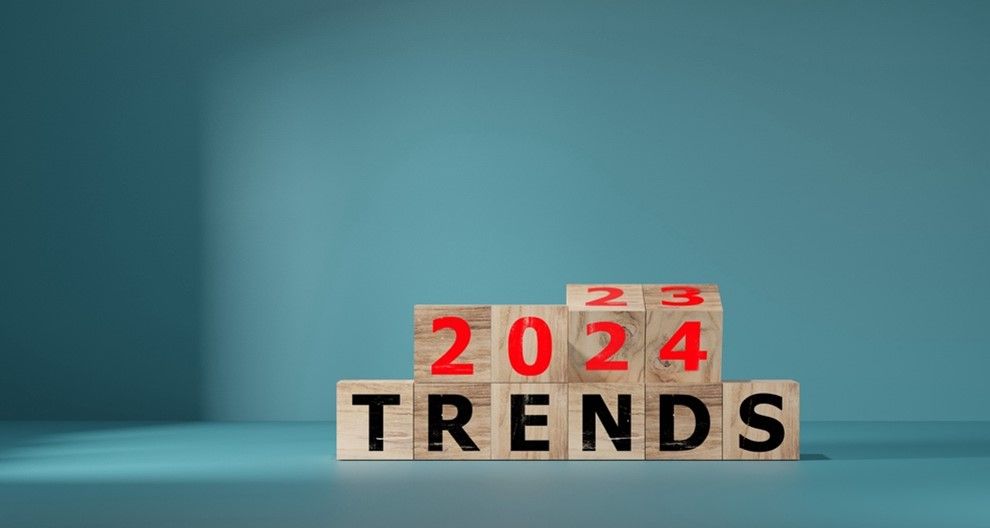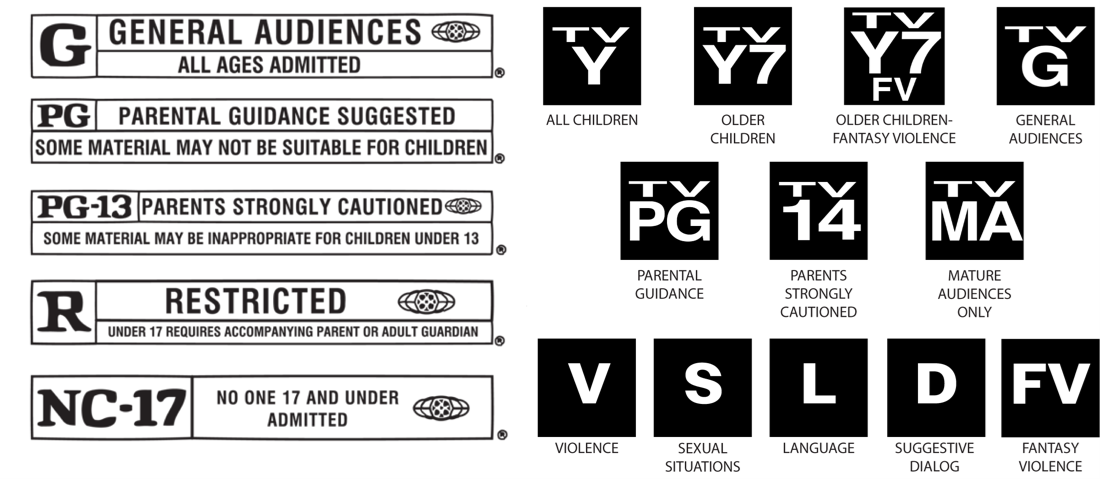TV Ratings vs. Movie Ratings
As professionals involved in the Media and Entertainment (M&E) industry, we’re sure you are aware there are separate ratings for US film and TV content. What you may not be aware of are the differences between the two. This post will highlight these differences and describe how they impact the audience as content is distributed across various platforms.
The Basics
Ratings exist to inform parents and audiences about the appropriateness of content for their children and families. The problem ratings attempt to solve is that exposure to violent, sexual, adult, or suggestive language content can be harmful or offensive to specific audiences. Ratings provide a warning that those events are part of the production. Age is the primary determinant in assigning a rating, but presumed maturity within a rating category (e.g., PG vs. PG-13) may also be a factor. In other countries, criticism of the government, unflattering depictions of cultural norms, or negatively describing religion are grounds for content to be assigned higher age ratings or even banned. Those factors are not typically an issue with US age ratings for film or TV.
The first thing to understand is the fundamental difference in the purpose, type, and reach between the two platforms. Movie ratings were established for the content shown in movie theaters. TV ratings were created for content displayed on TV screens. The similarity is content; the difference is paid admission versus 24/7 access in our living rooms. The former is controlled access by requiring payment for a ticket, and the latter may not be controlled at all. Parents can be in the audience with a child in a theater but might be away while the show is on the living room TV. As a result, content notification requirements are more granular and specific for TV ratings than for film.
For example, there is no need for a comparable TV-Y or TV-Y7 rating in theaters because a G-rated film easily encompasses and addresses the guidance those ratings provide. Likewise, there is no market for NC-17 content on linear TV or streaming platforms, so TV has no comparable rating.
The next thing to understand is two different groups developed the US ratings systems. The Motion Picture Association (MPA), an industry trade group, developed US film ratings in 1968. Occasional updates have reflected changes in types of content, such as the introduction of the PG-13 rating following the release of an Indiana Jones film. We have previously written about this in more detail here.
Television ratings were developed and maintained by the TV Parental Guidelines Monitoring Board, also an industry trade group, in 1996. Its members include the MPA, the National Association of Broadcasters (NAB), the Internet and Television Association (NCTA), and five public interest groups. Their interests are related, but their ratings differ at the top and bottom of the age scale. TV ratings were created as a voluntary system following concerns expressed by the US Congress and complaints made to the US Federal Communications Commission (FCC) about objectionable TV content being aired without notice to parents. TV programs are self-rated by the networks or platforms in the US system.
The Ratings Matrix
Below is a comparison matrix that presents the difference between movie and TV ratings systems.
|
MPA Rating |
TV Rating |
||
|
|
|
TV-Y |
This program is designed to be appropriate for all children. Whether animated or live-action, the themes and elements in this program are specifically designed for a very young audience, including children from ages 2-6. This program is not expected to frighten younger children. |
|
|
|
TV-Y7 |
This program is designed for children age seven and above. It may be more appropriate for children who have acquired the developmental skills needed to distinguish between make-believe and reality. |
|
|
|
TV-Y7 FV |
Programs where fantasy violence may be more intense or more combative than other programs with a TV-Y7 rating alone. |
| G |
Nothing that would offend parents for viewing by children. |
TV-G |
Most parents would find this program suitable for all ages. |
| PG |
Parents urged to give “parental guidance.” May contain some material parents might not like for their young children. |
TV-PG |
This program contains material that parents may find unsuitable for younger children. Many parents may want to watch it with their younger children. |
| PG-13 |
Parents are urged to be cautious. Some material may be inappropriate for pre-teenagers. |
TV-14 |
This program contains some material that many parents would find unsuitable for children under 14 years of age. Parents are strongly urged to exercise greater care in monitoring this program and are cautioned against letting children under 14 watch unattended. |
| R |
Contains some adult material. Parents are urged to learn more about the film before taking their young children. |
TV-MA |
This program is specifically designed to be viewed by adults and therefore may be unsuitable for children under 17. This program may contain one or more of the following: crude indecent language (L), explicit sexual activity (S), or graphic violence (V). |
| NC-17 |
Adult content, children are not admitted. |
|
|
US TV ratings also contain "content descriptors” that specify specific types of potentially objectionable content. The elements within those descriptors are:
D – Suggestive dialogue (rarely used with TV-MA-rated programs)
L – Coarse language
S – Sexual content
V – Violence
FV – Fantasy violence (exclusive to TV-Y7-rated programs)
These elements are shown below the rating and displayed for 15 seconds at the program’s beginning and following any breaks.
Upon review, it’s clear that TV ratings closely resemble those used for movies; this is on purpose. The reason is to provide continuity and consistency for parents and regulators across all content distribution platforms, including theatrical, linear, retail, and online services. As a system, both have worked quite well and have served as a model for other countries worldwide who wish to provide consumers with helpful information about content and titles they may consider sharing with their children, families, and friends.
Spherex: Localized Age Ratings Services Provider
As the global industry authority and leading private provider of local age ratings worldwide, Spherex uniquely understands the importance of getting age ratings right, regardless of the platform. Spherexratings™ and Spherexgreenlight™ provide content creators with the necessary knowledge to tailor titles to fit any age rating and identify their best markets. Greenlight™ is a first-of-its-kind AI/ML technology that culturally adapts content for markets worldwide. With this technology, content creators can increase engagement, drive more revenue faster, and avoid legal and regulatory risks.
Take the guesswork and risk out of international expansion. Contact us today!
Related Posts


SILICON VALLEY
2336-H Walsh Ave.
Santa Clara, CA 95051
+1(408) 550-2344
LOS ANGELES
3900 W Alameda Ave.
Burbank, CA 91505
+1(310) 496-7307









